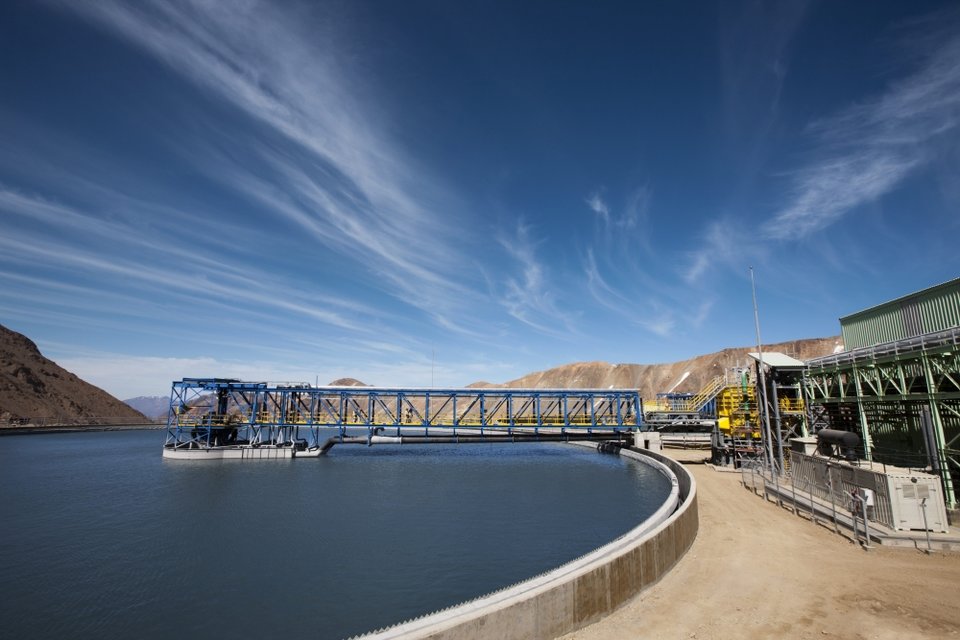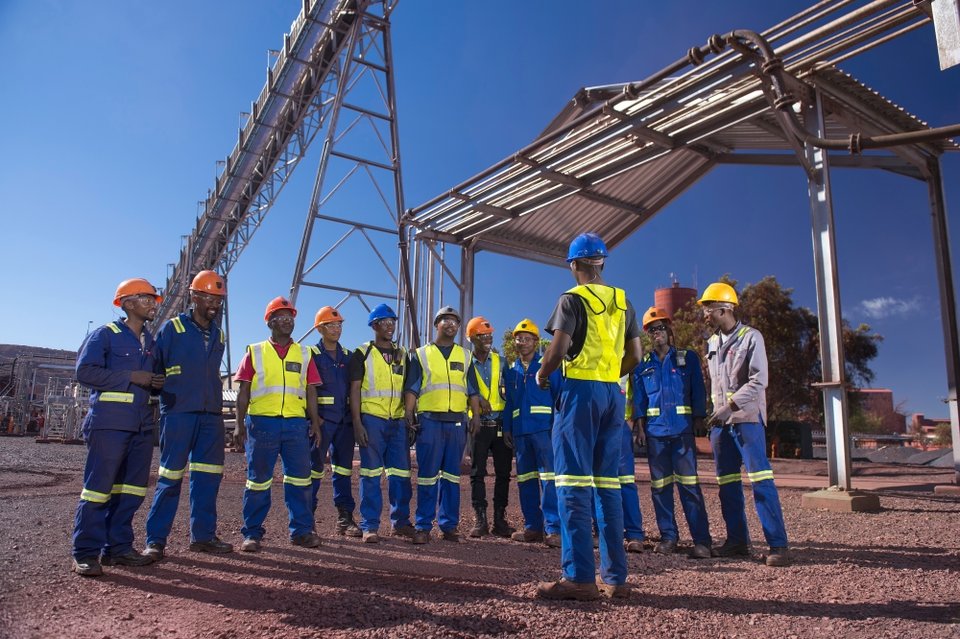Is Anglo American’s New Strategy Sustainable?
Scroll down to read the article
all images credit: anglo american
In March this year, the British-South African mining giant Anglo American announced a new sustainability strategy designed to change and challenge perceptions of sustainability across the industry. Among the goals is a 30% reduction in greenhouse gas emissions, a 30% energy efficiency improvement and the reduction of freshwater abstraction by 50% in water-scarce regions, all to be achieved by 2030.
This new strategy has replaced Anglo American’s 2020 targets, which included an energy saving target of 8% and greenhouse gas emissions reductions of 21%, while cutting freshwater withdrawal by 20%. On paper the revised figures look impressive but when it comes to the environment and human rights, there are few industries in the world that suffer quite as bad a reputation as the mining sector.
And of the major mining companies there are perhaps none that have had to work harder to change that image than Anglo American. From benefiting from apartheid-era South Africa to its complicated financial stakes in diamond mining leader De Beers, which itself has been accused of trading in conflict diamonds, Anglo American has faced no shortage of criticism over the years.
Raising tough questions
A 2014 report by Friends of the Earth International (FoEI) titled How Corporations Rule: Anglo American’s dirty energy lobby and its false climate solutions investigated the company’s lobbying efforts at the UN Framework Convention on Climate Change and its activities at different coal mines around the world.
At the El Cerrejón open-pit coal mine in Columbia – where Anglo American is one of three equal shareholders – FoEI accused the company of exporting “both the highly polluting fuel and all its profits” while leaving behind “social and environmental destruction” and “adding to the climate debt owed to the global south”.
The report argued that pollution of the nearby Rancheria River has made it impossible for local people to hunt, fish and raise livestock. It also argued that ideas promoted by the company, from carbon capture and storage to carbon trading, represent “false solutions” designed to create further “business opportunities for corporations and the financial sector”.
And considering that just this month the company was fined $37.73m by the Brazilian Government for pollution caused by a leaky pipeline carrying iron ore from the Minas-Rio mine, environmental commitments are just one example of the many problems Anglo American faces.
It leads to an important question: is the company’s latest attempt to tackle greenhouse gas emissions and other environmental issues a genuine example of corporate social responsibility or evidence of what some environmental groups have come to call greenwashing?
While the answers remain to be seen, Philip Kleinfeld put a series of questions to an Anglo American spokesperson to find out what the company’s new strategy really entails and whether the company can deliver on its targets, and how the industry can clean up its reputation.

Anglo American is aiming to reduce its freshwater intake in water-scarce locations.
Phil Kleinfeld:
How important is it that the mining industry addresses environmental challenges? And what benefits can this bring to mining companies and wider society?
Anglo American: Mining plays an important role in society. The materials we mine are essential to modern-day technology, from smartphones to vehicles, and forms of clean energy, from wind turbines to solar panels.
But mining is an industry at a crossroads, as society’s expectations of industry and business rightly grow. For us in mining, we must never think that the status quo is enough and so we must strive for step-changes in how we mine, how we can enable the full benefits of mining and how we engage with society as a whole.
Our role in the modern world is far greater than simply acting as a supplier of physical products. If Anglo American, or any mining company, is to play a role in creating a sustainable future for the world and all of us who live here, then we must be prepared to challenge our business and ourselves. We must look beyond our physical operations, be more transparent in our thinking and seek to deliver the value that all our stakeholders have the right to expect.
Did Anglo American meet its 2020 sustainability goals?
GHG-emission savings in 2017 amounted to 4.8 million tonnes – a 21% reduction relative to ‘business as usual’ (BAU) consumption. And we are on track to achieve our energy savings goal, where we are currently at 6% relative to BAU. Approximately 320 energy efficiency and business improvement projects saved 6.4 million gigajoules in energy consumption in 2017.
We have made progress towards our 2020 targets of reducing absolute freshwater abstractions by 20% (against our projected BAU), recycling/reusing water for 75% of our water requirements and recording no Level 3 or above incidents, defined as environmental incidents with moderate-to-major impact.
Anglo is working to improve job opportunities, training and resources for local workers.

Can you describe the core elements of your new sustainability strategy?
Our sustainability strategy is focused on three global sustainability pillars – Trusted Corporate Leader, Thriving Communities, Healthy Environment – each encompassing three global stretch goals. Our ambition is to be a trusted corporate leader, developing trust, providing ethical value chains and improved accountability to the communities we work with.
We want to be a company that makes a real difference, building thriving communities with better health, education and levels of employment. And finally, we want to be a company that maintains a healthy environment by creating waterless, carbon neutral mines and delivering positive biodiversity outcomes. Our targets include reducing greenhouse gases by 30% and reducing the abstraction of freshwater in water-scarce regions by 50% by 2030.
How did you calculate and set these new targets?
We have developed our strategy through extensive internal and external engagement and analysis of critical opportunities and risks, including the UN Sustainable Development Goals (SDG). Our strategy goes far beyond compliance with mining law or regulatory requirements. It’s about making a more strategic and holistic impact on the ground and it comprises mutually reinforcing elements that will positively transform how our stakeholders experience our business, both locally and globally.
Anglo's technical director Tony O’Neill said the new sustainability approach is “born from FutureSmart Mining™”. Can you tell us more about this approach and how you use it to help address environmental challenges?
At Anglo American our purpose is to re-imagine mining to improve people’s lives. We do this through FutureSmart Mining™, our innovation-led approach to sustainable mining. It is our blueprint for the future of our business. A future in which broad innovative thinking, enabling technologies and collaborative partnerships will shape an industry that is safer, more sustainable and efficient, and better harmonised with the needs of our host communities and society as a whole.
This includes finding new ways to make mining safer, more efficient and more sustainable, with a smaller physical footprint. It is this broad innovative approach, including how we use existing and new technologies, that will help us deliver on our promises, particularly when it comes to the safety of our people, our use of energy and water and our quest for a healthy environment.

An example of the company’s housing project in eMalahleni in South Africa.
What challenges will you face when working towards these new goals?
As with any new approach, we have learned a great deal. Firstly, we’ve recognised that focusing solely on development closest to the mine is not a recipe for success. There is a much wider area of impact that we have a responsibility to consider and that also has a bearing on the local, and our, infrastructure.
And secondly, as collaboration evolves our partners are discovering that the timeframes of different parties can be restrictive. For many organisations, it is tempting to think in short-term cycles. But in reality we cannot be particularly strategic in such short timespans, nor deliver the most effective outcomes. We need to look at socio-economic development in a different way, where we try to lead developments over a much longer timeframe.
While our goals may be defined at a global level, how we achieve them will also be a function of our actions at a local level. We recognise that our operations are all different and we are neighbours to a diverse array of communities in the many countries where we operate. We want to be a mining company that is a participative member of the community where it operates and campaigns to set new standards in corporate transparency.
We envision thriving mining communities where people have access to high-quality education, good public health care and diverse job opportunities. And we want to operate mines that have no negative effects on the available water resources of the communities where they are based.